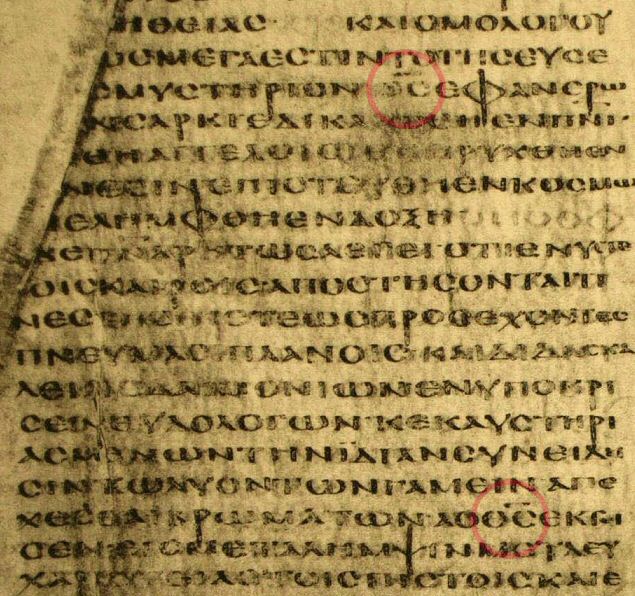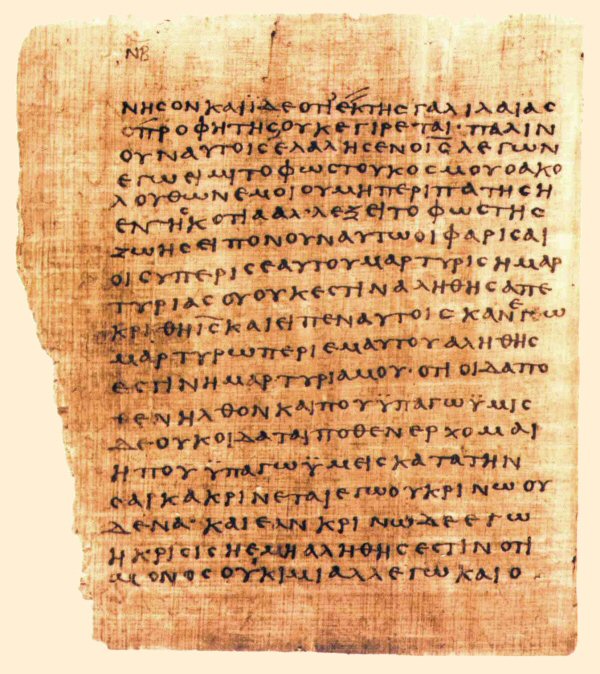



-
 evidences of the alterations of the bible
evidences of the alterations of the bible
1-http://news.bbc.co.uk/2/hi/uk_news/magazine/7651105.stm
"
What is probably the oldest known Bible is being digitised, reuniting its scattered parts for the first time since its discovery 160 years ago. It is markedly different from its modern equivalent. What's left out? "

2- http://www.bible-researcher.com/alexandrinus4.html

Reproduced below is the **** of 1 Timothy 3:16–4:3 from Codex A, as presented in the photographic facsimile volume published by the British Museum in 1879. Of particular interest here is the reading in 3:16, where it may be seen that the manu****** reads ΘC "God was manifested in the flesh," employing the usual abbreviation ΘC for ΘEOC, with a stroke over the letters to indicate an abbreviation. However, ****ual critics believe that the ink in the center of the Θ and the stroke above were added by a corrector in modern times. Reasons for this belief are the color of the ink, and the fact that a "dot" has been placed in the Θ instead of a line. Tregelles writes, "The ink in which this has been done in A is sufficiently modern and black to declare its recent application" (An Account of the Printed **** of the Greek New Testament, London, 1854). Without these marks, the manu****** originally read ΟC "He who was manifested in the flesh." In the photograph below the ΘC in 3:16 is circled. Further down, in verse 4:3, there is another ΘC circled for comparison.

3- http://www-user.uni-bremen.de/~wie/V.../note1512.html

On page 1512, the beginning of Hebrews, an curious note appears, which is mentioned by Bruce M. Metzger in his NTTC book. A later (minuscule aera) scribe complains about a change of the **** of Heb 1:3:
"Fool and knave, can't you leave the old reading alone and not alter it!"
"amaqestate kai kake, afeV ton palaion, mh ****poiei."
The note probably refers to the change of fanerwn to the standard reading ferwn in Heb 1:3. The letters "A" and "N" look different. The scribe of the note probably changed the correction back to the original reading.
It is also interesting to mention that on the right side an umlaut appears. This probably refers to the word-order change twn amartiwn poihsamenoV to poihsamenoV twn amartiwn.
This umlaut is on the "wrong" side. The question now is: Is it on the wrong side because on the left is this note? This would have serious consequences for the dating. Well, nobody knows for sure...

4- http://www.bible-researcher.com/papyrus66.html

it is an image of page NB (52) of Papyrus 66, a codex of John's Gospel from about AD 200. The **** begins in the middle of the word εραυνησον ("search") in John 7:52. On the second line the sentence ends with a punctuation mark and is immediately followed by Παλιν ουν αυτοις ελαλησεν ο Ις ("again Jesus spoke to them") in 8:12, omitting the Story of the Adulteress. The manu****** has been annotated by a scribe who used diagonal strokes to indicate a word-order variant in the first and second lines, but the Story of the Adulteress is omitted without any notation.
Thread Information
Users Browsing this Thread
There are currently 1 users browsing this thread. (0 members and 1 guests)
Similar Threads
-
By nohataha in forum English Forum
Replies: 0
Last Post: 16-09-2007, 03:10 AM
-
By مسلمة الروح in forum English Forum
Replies: 3
Last Post: 26-11-2006, 05:21 PM
-
By edkawy in forum English Forum
Replies: 5
Last Post: 06-11-2006, 12:50 PM
-
By Alexi_Tarek in forum English Forum
Replies: 0
Last Post: 06-08-2005, 11:35 AM
-
By edkawy in forum منتدى نصرانيات
Replies: 1
Last Post: 01-01-1970, 03:00 AM
Tags for this Thread
 Posting Permissions
Posting Permissions
- You may not post new threads
- You may not post replies
- You may not post attachments
- You may not edit your posts
-
Forum Rules













 Reply With Quote
Reply With Quote


Bookmarks